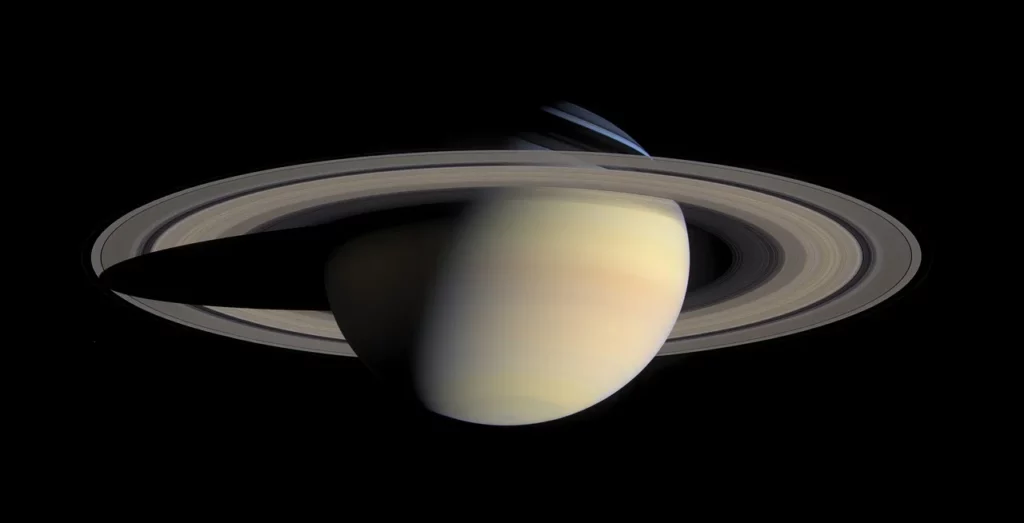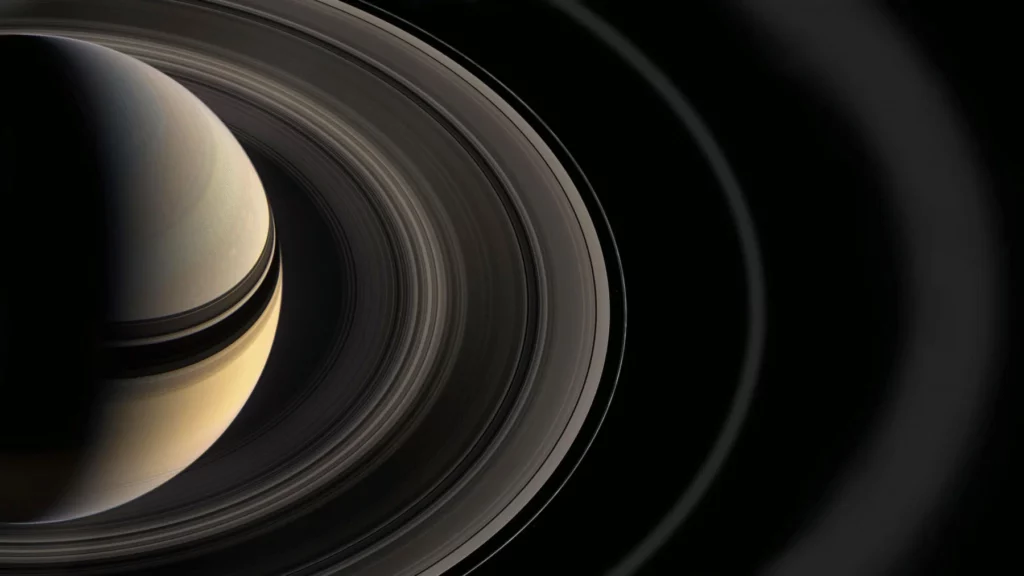Saturn's Rings: Structure, Composition, and Mysteries

In the vast and mysterious realm of our solar system, one of the most iconic and captivating objects is the planet Saturn. And if there's one thing that makes Saturn stand out among its neighbors, it's the presence of its breathtaking rings. These rings, encircling it in a celestial spectacle, have captivated scientists and space enthusiasts for centuries. In this article, we'll delve into the amazing world of Saturn's rings, exploring their structure, composition, and the mysteries that still surround them.
Saturn's Rings: A Celestial Wonder
Saturn's rings were first discovered in 1610 by the Italian astronomer Galileo Galilei. However, due to the limitations of his telescope, Galileo couldn't identify the true nature of these rings and described them as "ears" or "side handles" of Saturn. It wasn't until 1659 that the Dutch astronomer Christiaan Huygens, using a more advanced telescope, correctly identified the rings as a thin disk encircling the planet.
Types of Rings
Saturn's rings are divided into several major ring systems, each comprised of countless particles ranging in size from tiny grains of sand to large chunks of several meters. The primary ring systems of Saturn include:
- Ring D: The D ring is the closest ring to Saturn and is primarily composed of ice particles. It is notable for its narrowness and dark appearance, suggesting the presence of organic material.
- Ring C: Ring C is one of the brightest and widest rings of Saturn. It is primarily composed of ice particles and is the most easily observable from Earth.
- Ring B: Ring B, also known as the "bright ring," is one of the densest and most reflective rings. It contains a significant amount of ice particles and stands out prominently in images.
- Ring A: Ring A is the outermost ring of Saturn before reaching the fainter and more diffuse rings. It is known for its faint appearance and contains smaller particles than the inner rings.
Composition of the Rings
Saturn's rings are primarily composed of water in the form of ice, although they also contain rock and dust particles. The variation in particle size contributes to the unique appearance of each ring. In addition to these particles, the rings may contain other elements and compounds, such as ammonia and methane.

Despite centuries of observation, many mysteries still surround Saturn's rings. Some of the most intriguing questions include:
What is the Origin of the Rings?
The origin of Saturn's rings remains an enigma. Although they are believed to be the result of the breakup of an ancient moon or remnants of material that never coalesced into a moon, the precise answer to this question remains a challenge for scientists.
How Do They Remain Stable?
Another mystery lies in how Saturn's rings remain so stable and balanced over time. The gravitational pull of Saturn's moons and the influence of the planet itself are key factors, but there is still much to learn about this process.
What Do the Rings Reveal About Saturn's History?
Saturn's rings can also provide valuable clues about the planet's history and evolution. Studying their composition and structure could help us better understand Saturn's formation and its place in the solar system.
Frequently Asked Questions (FAQs)
1. What is the primary material in Saturn's rings?
Saturn's rings are primarily composed of water ice particles, although they also contain rock and dust particles.
2. How many rings does Saturn have?
Saturn has several major rings, but these are further divided into countless individual rings and narrow gaps between them.
3. Which is Saturn's brightest ring?
Ring B, also known as the "bright ring," is one of Saturn's most reflective and visible rings.
Conclusion
Saturn's rings continue to be an endless source of wonder and mystery in the study of our solar system. As technology and research advance, they are likely to unveil more secrets about their origin, composition, and evolution. These iconic rings, which have fascinated humanity for centuries, remain a reminder of the vastness and beauty of our universe and the importance of continuing to explore and understand the mysteries that surround us. Who knows what revelations the future holds in the exploration of Saturn's rings and other corners of the cosmos!
Reference: Saturn's Rings by NASA

IMPRESCINDIBLES DE LA SEMANA